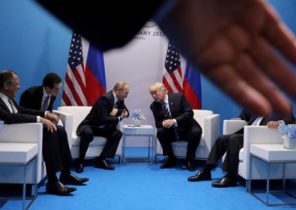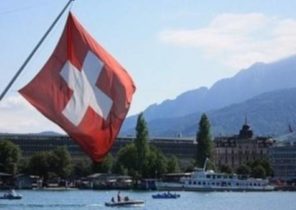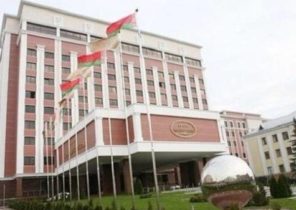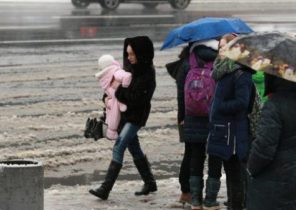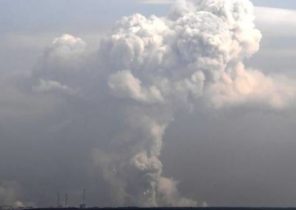
Analysis of reports from the front — from the fierce fighting in Marinka in January of this year to heavy clashes in the area of Svetlodarsk arc in December — indicates that the wave-like nature of the war with a sudden change of periods of intense fighting and periods of relative calm. The wide use of artillery, surveillance and target designator (primarily drones), concealed control of troops (forces) and jamming have become an everyday reality of this war a new generation. In addition to the progress of military operations at the front, outstanding in the context of security and defense in 2016 was the Warsaw summit of NATO, which adopted the comprehensive plan of assistance for Ukraine; approval of the Strategic defence Bulletin and the proclamation of the transition of the Ukrainian Armed forces to NATO standards by 2020; support for security Sector and defense of Ukraine our Western partners; the renewal of armored and other vehicles of combat troops kit; quantitative replenishment of the Armed forces of Ukraine and increase cash security of the military and much more.
I hope that the troops received combat experience 2016 will be a serious ground for learning the lessons of the combat use of troops, the development of modern techniques and methods of conducting of armed struggle, will initiate a substantive discussion in the political— military environment, changes in the military— technical policy, improvement of organizational structures, etc.
At the same time, not claiming the exclusivity of expert opinion, to attract the attention of the active part of Ukrainian society, in my opinion, important bezopasnosti the aspects of defence, will take the liberty to identify some common lessons 2016 in the field of security and defense of Ukraine:
The first is the class nature of the action, the political— military choice between the retaliatory actions and actions in advance (not to be confused with the types of military operations — defense, and the offensive or counter-offensive). Response vs advance have a mental nature, are more a way of thinking and action approach to the construction of the system of state political— military control, rather than strategic, operational or tactical categories. Mental response is always based on trying to avoid risks ahead of the curve on risk — taking and management. The response is static in nature, they are often the result of passive expectations and reactions to unexpected negative surprise. As a rule, the surprise factor causes confusion and leads to loss of time, which in turn increases the losses and reduces the efficiency of the response. Ahead means being proactive, the ability to provide for the development of the situation and beat the enemy with wit and wisdom. This war is not static, in fact — it is positional relative to the current position of the troops, but the dynamic regarding the forms and methods of combat operations, and the use of non-traditional areas of armed combat and weapon types — informational, electronic, cybernetic, and others. Politico— military advance in these fields plays a key role, his value will continue to grow.
From this follows the second lesson — about actions in the time mode. If the state seeks to be effective in responding to a very fast active and destructive effects risks and dangers of war a new generation in decisions and actions must be not only strategically or operatively feasible but also fast. Experience shows that in a modern operating context the principal is the triangle of benefits in the management decisions, operational speed and selective/pitting effect on the enemy. This requires combat systems (reconnaissance— strike, manoeuvre— position, mobile missions, special operations, and others), the creation of which largely depends on implementation of automated control systems for troops and weapons. These systems allow troops to see the enemy the entire depth of the operational formation and support of management decisions “revolve” around him and inflict an unexpected defeat/influence, while maintaining its own fighting capability. All of this requires changes in military strategy, military— technical policy and the state defense order. The specified applies to security and defence in General. The good news is that defined in the strategic documents of defense planning key changes began to be implemented. But are they fast is the question to be addressed, because slow changes in the output mean the absence of change. Nothing new, just a well-known rule of crisis management.
The third lesson is the lesson of synergy of professionalism and civilizational choice. A key objective of the Strategic defence review of Ukraine, approved in June this year, the implementation of NATO standards by Ukraine’s Armed forces until 2020. The realization of this ambitious goal depends on at least three conditions: political will for the achievement of interoperability with NATO; the presence of a team of professionals who deeply understand what the standards of the Alliance, and a road map of their implementation, combined into a single implementation team; as well as the necessary resources for appropriate changes. Important synergy at the highest and working levels: if the leader and his immediate subordinates are the carriers of culture, NATO, knowledge and skills, the leaders and drivers of reforms are in the walls Povitroflotskyi then will the appropriate conversion and good prospects. If on the contrary, the leader and his subordinates are fighting for the “purity” of outdated principles of security and defense, then, most likely, appropriate changes will be delayed/inhibited, and the right persons to implement the necessary reforms to be pushed (to leave) from the system. Simultaneous activity within the system and those and others raises fundamental contradictions and, as a consequence, inhibits appropriate reforms. The final vector professional abilities/civilization choice of the personnel of the Sector of security and defense is crucial in relation to the existing state of national security and that which we will see in the near future. Whether it is to meet the desire of citizens of Ukraine and will be able to provide the transition to NATO standards, only time will tell.
The fourth lesson is that technological. Understanding the technological nature of the war a new generation comes the judgment of directions of search and implementation of high-tech defence solutions. It is of course possible to conduct this war in the platforms and tools of the last century, then it remains a rhetorical question: is it effective? For example, experience shows that today it is not enough to have long-range means of destruction (not only fire), you need to accurately delivered to the target (impact on target). Modern technological solutions in the field of observation, detection and target designator, the introduction of automation of management processes at different levels (the right processes, because automation is wrong leads to chaos), night vision systems and night actions, telecommunications, simulation and other complexes give an opportunity to get ahead of the other side and succeed. Therefore, in war not to Fund pragmatic vs cost— effective defense scientific research and design work, where Ukraine has a huge scientific and technological potential, means to risk to keep up with the enemy with all the negative consequences. Another area of cybernetic security. Recent events strongly indicate the need to address vulnerabilities of critical infrastructure of Ukraine from cyber attacks. The structures of the security Sector and defense need “front door” to proposals of new technical solutions, that is, competent leaders who understand the issues of innovation and technology, with the right to make decisions regarding their implementation.
The fifth lesson relates to ensuring the vitality of Ukraine in the conditions of the destabilizing influence of hybrid threats, which are aimed at “defeating the enemy before the war” by the targeted effect on the consciousness of different layers of its population. Through the public consciousness these threats pervade most spheres of state and society, that is, have total respect to the country— of purpose in nature. Against the survivability of the country are corruption and a lack of transparency in politics and the economy. The logic of survival in these difficult conditions demonstrates the need for the formation and maintenance of political solidarity, unity around shared values, identity and chosen path of development on a public— private partnership (PPP) is a framework of mutual respect and trust of government and society. Unfortunately, PPP in the sphere of security and defense in the Western sense in our country is not created, this problem requires solving on legislative and Executive levels.
In 2014, Ukraine has been embroiled in a long and difficult war, it is a reality that affects every citizen of the state and will move on next year. Available indicators show a substantial likelihood of increasing existing and the formation of the field of new threats on Ukraine — war never fades away by itself, only through the narrowing of its driving forces and mechanisms. In these conditions, perefraziruya a “Three M” (Men, Maneuver, Munition) that are relevant concerning neutralization, containment, and elimination of the conflict remain, the effectiveness of people, maneuver and means of influence.

